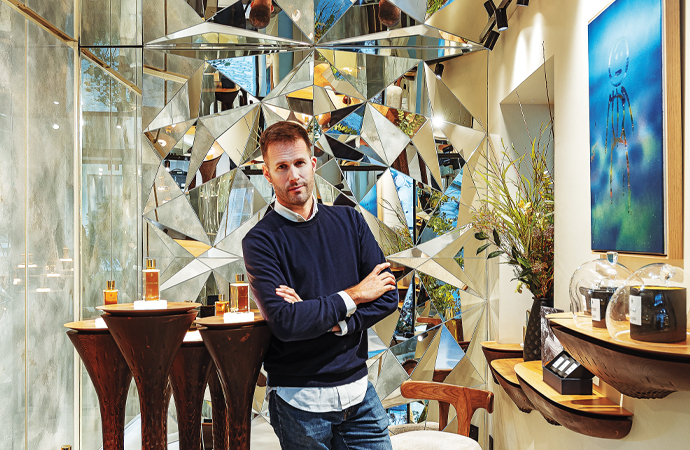Which Private Membership Club Is Right for You?
Once known for being sanctuaries for exclusivity, a spate of openings is redefining these gathering spaces
March 1, 2023
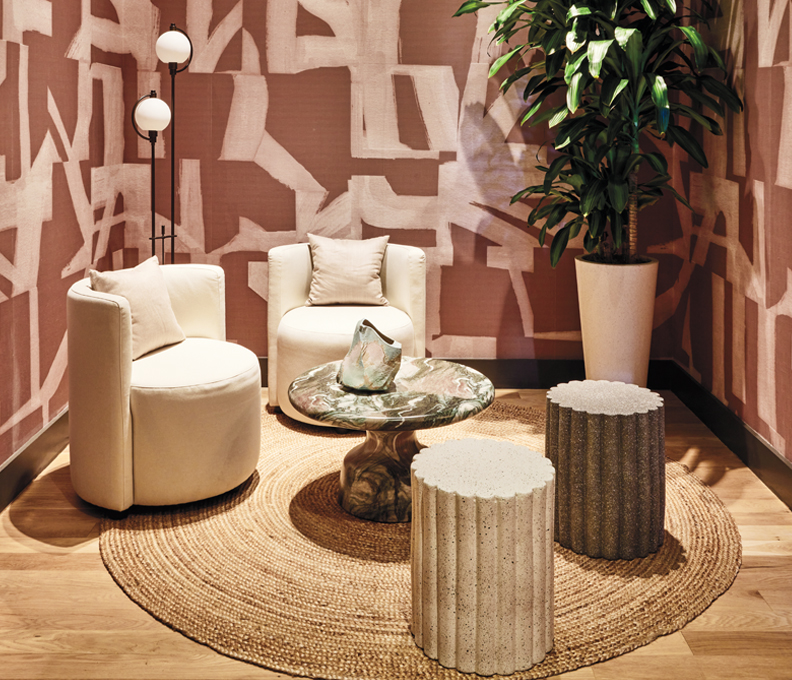
Lobby at The Aster, Los Angeles / Photo: Courtesy of Sam Frost
While tennis clubs, golf clubs and country clubs have long been the cornerstone of the membership-club model, new private gathering spaces positioned toward nomadic executives and entrepreneurs are popping up worldwide. Under one roof, you can close deals, share ideas, build community, eat, drink, sleep and socialize. A departure from the guarded, behind-closed-doors institutions of yore, the new generation of membership clubs promise that entry is just a cleverly written application, board approval and paid initiation due away.
But when considering which private club to join, where do you fit in? Each comes with its own target demographic and ethos—and while once known for being sanctuaries for exclusivity, many are taking a decidedly inclusive approach.
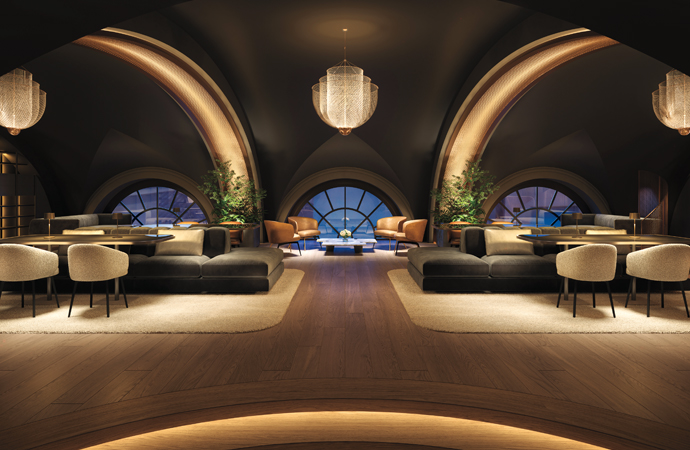
Speakeasy at Core: Milano / Photo: Courtesy of Core
Core
New York City
Inspiration struck entrepreneur Jennie Enterprise during the early-2000s dot-com boom to create a universal space for the growing community of global citizens. Enterprise envisioned the members of this venture to be limitlessly curious people who were truly energized by cultural exploration, committed to community engagement and inspired by original perspectives—but not bound by geography. These would become the core values of Core. After an advantageous encounter with property developer Aby Rosen, Enterprise’s dream began to take shape in the form of a brick-and-mortar Core on New York’s 55th Street between Park and Madison, prime Manhattan real estate, which opened in 2005.
Core’s membership spans more than a dozen industries, with every member invited because of a compelling individuality. The club strives for an equal number of men and women who will bring a diversity of perspectives, insights and opinions.
“We’re looking at life experiences, perspectives and relentless curiosity,” Enterprise says. “We are curating a global community of ‘unlike-minded’ individuals. We’re not looking for the same types of people who enjoy the same things.”
While Core protects the privacy of its community, sources say that members past and present include heavy hitters such as billionaire entrepreneur Christopher Burch, former GAP CEO Mickey Drexler, Endeavor CEO Ari Emanuel and former Yahoo! chairman Terry Semel. Almost 20 years after its debut, Core is expanding to three new locations in historically relevant structures in the next year: a flagship on Fifth and 55th in Manhattan’s former Coca-Cola building; in a restored palazzo in Milan; and within San Francisco’s Transamerica building.
Enterprise says as the model branches out, there is a focus on building up young leaders. “We’re proactive in searching for agents of transformation. Our members do nominate other amazing people, but there are many times when we’ll read about somebody really extraordinary. And we will find out through our own internal relationship science that they are one or two degrees away from a current member.”
Core is light on rules, without a dress code or cell-phone policy. “We want members to conduct the business of their lives,” Enterprise says. “When you select the right people, you don’t have to impose rules.”
With time being one of the only commodities that the Core member may lack, the physical and experiential elements have to be top-notch. “How do we manifest the brand in a physical space that is architecturally interesting and infused with culture? And then what’s the experiential architecture that matches the physical architecture? When you walk into Core: Milano, you should feel like it’s the essence of Core with the soul of that particular city.”
In New York, the bar and dining room serve as hubs for socializing and culinary innovation. The terrace provides a beautiful oasis with seasonal plantings and sculpture installations. Core: Wellness delivers a full fitness experience with specialists on hand. There’s also a library and private meeting spaces. Suites feature floor-to-ceiling windows with dramatic views and private kitchens and terraces. Core also hosts more than 300 cultural programs each year. Some of those have included artist Ai Weiwei in a conversation with Richard Gere; a talk with artist Takashi Murakami; artist Jeff Koons in conversation with Jeffrey Deitch; a Q&A with Kiefer Sutherland and Anna Wintour; and a vinyl listening experience with musicians Norah Jones and Ryan Adams.
The Dangene Institute, founded by Enterprise’s wife and offering skincare protocols focusing on age optimization, cell rejuvenation and highly functioning skin, will be available in all Core locations. Fees range between $15,000 and $100,000, with annual dues from $15,000 to $18,000.
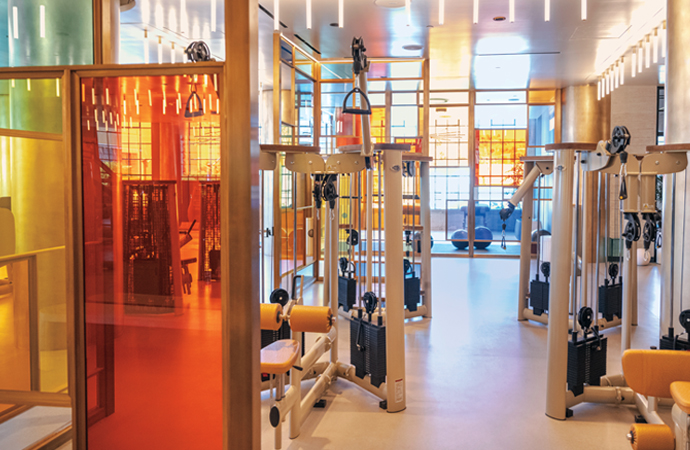
Strength machines at Heimat, Los Angeles / Photo: Courtesy of Heimat
Heimat
Los Angeles
While most private membership clubs have elaborate gyms and spas, Los Angeles’ Heimat makes fitness and well-being its core principles through what its creators define as a concept club. Heimat is the brainchild of RSG Group, which owns 1,000 clubs around the world across 20 different brands (including Gold’s Gym), with six and a half million members.
“With Heimat, we created something that’s never been done before, combining fitness, well-being, indulgence and coworking all under one roof,” says Sebastian Schoepe, president of RSG Group North America. “Heimat” is a German word used to describe the familiar feeling of home, and it delivers on that moniker at every turn. This members-only space housed in a 75,000-square-foot industrial building from the 1930s offers five floors of gym and fitness classes, spa, coworking space, a west-facing rooftop pool and cabanas ideal for sunsets—and the only public space, Mother Tongue restaurant by Michael Mina. Schoepe knew L.A. was the ideal market in which to launch the brand.
“It’s a big city but also a very lonely city, and a lot of companies have tried to create spaces where people can mingle and socialize,” Schoepe says. “Either it’s a social club with a restaurant component, or it’s a gym, or it’s coworking, but nobody has ever combined it all. Heimat takes the attitude of a gym where you learn about sacrifice and discipline, but there’s also an indulgence component with our restaurant, and you can have a nice glass of wine by the firepit. And then you have the coworking space.”
Use of all spaces is included in membership except for food and beverage, personal training and spa and beauty treatments. Fitness amenities are tailored to uplift the body and soul with cardio, free weights, stretching and functional and machine strength training. All memberships include cycle, run, boot camp, barre, boxing, dance cardio, kinesis, TRX, yoga (mat and hot) and reformer Pilates classes throughout the boutique studios.
How members use the space is as varied as the programming offered. Schoepe says some stay for the whole day, working out in the morning and then having meetings. One can take a group fitness class, return to work, have lunch at the restaurant, get nails done and spend the afternoon by the pool before meeting friends for dinner at Mother Tongue, featuring dishes that embody wellness trends and nutritional best practices.
“We have people here every day for eight hours. And then we have people just popping in for a group fitness class or the pool area or lunch or dinner,” he says. “As a nonmember you can access the restaurant and, for certain events, the clubhouse. There’s also an opportunity to purchase a day pass for the entire club and you can use every facility that a member can use.” In January, Heimat opened a women’s-only location in Paris, and both Dallas and San Francisco are in the pipeline. Membership fees are $350 a month with a $300 initiation fee.
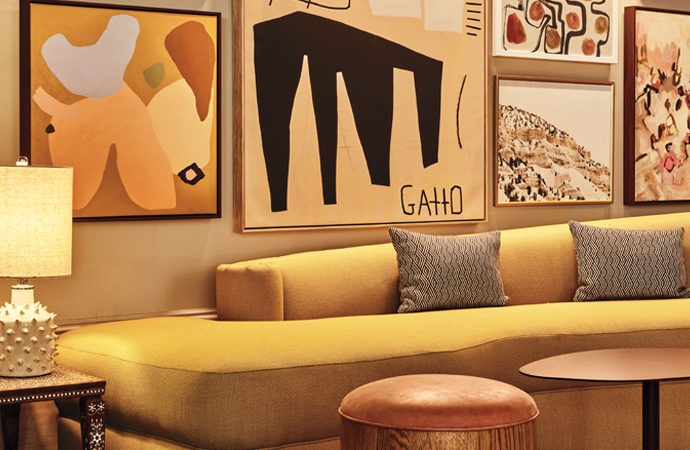
Club room at The Aster / Photo: Courtesy of Sam Frost
The Aster
Los Angeles
When Salt Hotels cofounders David Bowd and Kevin O’Shea got the opportunity to add a West Coast property to their growing hotel portfolio, they jumped at the chance. Especially one at the crossroads of two of the world’s most famous streets—Hollywood and Vine.
Stockdale Capital, which purchased the former H Club in 2021, offered Bowd and O’Shea the property and it was kismet. The 95,000-square-foot six-story building had undergone extensive renovations to become a private club when it was transformed from The Redbury hotel several years earlier.
“It was really about the location. And the rooftop is so mind-blowing I just couldn’t get past that,” says Bowd. “It’s so iconic overlooking Capitol Records and the Hollywood Sign.”
“It was a cool opportunity, and very timely,” O’Shea adds. “Private membership clubs are having a moment right now. It was an opportunity for us to put our hospitality mark on that sector of the industry and see what we could create.”
In August, The Aster, with rooftop restaurant Lemon Grove from Top Chef alum Marcel Vigneron, debuted as an adults-only member’s club. Operating the property with a boutique hotel mindset means members and guests have all the amenities they expect from world-class club brands and the service they expect from luxury hotels.
“One of our frustrations with the private club sector is that service tends to be lacking,” O’Shea says. “Once you’re in the door there’s an air of exclusivity, but then it falls short after that. This was about operating the club like a luxury hotel. With our membership pool, we have the same customers every week, so it’s a fantastic opportunity to really get to know the people. We get to know what they like, so it’s a wonderful opportunity to provide highly personalized service.” Salt Hotels is a collaboration between Bowd (formerly of Chateau Marmont in Los Angeles and Chiltern Firehouse in London) and O’Shea (Starwood Hotels & Resorts, Morgans Hotel Group)—partners in business and life.
The duo met while opening the Mondrian Scottsdale. “We fell in love with Provincetown, Massachusetts, and had this grand idea to buy an inn, get a dog and leave the city to go and have this wonderful life,” O’Shea says. “Everyone seems to romanticize owning a bed-and-breakfast. Twelve years later, we just got the dog.”
Bowd continued to work in New York while O’Shea moved to Provincetown. “It naturally progressed from there. We slowly added a second one and a third and here we are with eight and more on the way.” Their hotels now stretch from Massachusetts to New Jersey to Miami Beach. In 2023, they will open their largest project to date in Minneapolis. In Los Angeles, The Aster includes a 35-seat screening room, pool, cabaret, lounges, salon, dedicated workspaces, recording studio and more. Thirty-five all-suite guest rooms offer separate seating and dining areas with 40-inch white oak tables.
Lemon Grove serves fresh California fare, with a wine list selected from local and all-natural producers. A magnificent outdoor deck and theater is spotted with lemon trees as well as firepits. Open to the public for dinner, it is exclusively reserved for members at lunch.
When booking a suite, nonmember guests gain access to all amenities and programming while in residence. “If you live in New York and you come to L.A. two or three times a year, a membership probably doesn’t make sense financially,” O’Shea says. “But staying in the hotel gives you the opportunity to network, engage in our programming and enjoy our culinary experience.”
Programming includes educational talks, master classes, screenings, DJ sets, concerts and unique performances. With kindness at its core, The Aster welcomes anyone to join. The vision is to create a melting pot of personalities from different backgrounds and industries. There are no check-in times or rules such as limited laptop or phone usage. The Aster’s membership base revolves around those who work with flexible schedules or who work from home and miss the community they found in the workplace.
“There are a lot of clubs out there. We wanted to create a space for people who maybe don’t see themselves reflected in other clubs,” O’Shea says. “There aren’t the stringent approval processes, like, ‘We need to see your financial statements,’ or, ‘I’m sorry, we’re not taking bankers this month.’ It’s much more about who you are and your values. It really has worked, and it’s attracting a dynamic group of people.” Membership fees are $3,600 per year.
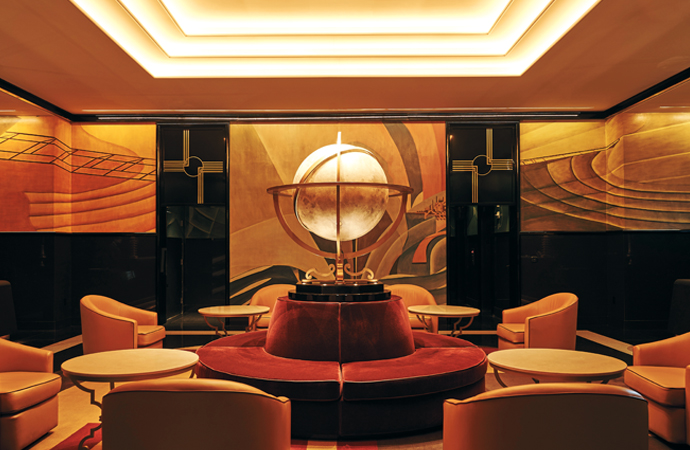
Lobby at Casa Cipriani, New York City / Photo: Courtesy of Adrian Gaut
Casa Cipriani
New York City and Milan
With a view to bring together those who want to “share life’s simple pleasures” and experience the Cipriani ethos beyond Bellinis and carpaccio, Casa Cipriani now has outposts in New York City and Milan. The former is located on the southeastern tip of Manhattan in the 1909 Battery Maritime Building, one of the last remaining beaux-arts-style ferry terminals. The preserved and reconstructed features of the historic landmark complement the modern-influenced hotel/club. The brand’s maritime motif—from portholes and murals to lacquered mahogany decor and Loro Piana textiles—plays out perfectly in the Thierry Despont art deco ocean-liner-inspired interiors.
As surprising as each space feels in both its atmosphere and vibe, there is no denying this is Cipriani down to the zucchini chips. There’s a hotel (47 rooms and suites), restaurant, bar and jazz club, wellness center and event space. Members range from financiers and tech mavericks to creatives, celebrities, designers, models and culinary professionals. The living room with its commanding fireplace beckons ink to dry on freshly signed deals. The ambiance of the rooms is permanently set to golden hour no matter the time of day, thanks to warm lighting and gilded tones. Magnificent views of the Brooklyn Bridge and Statue of Liberty add to the singular experience.
In Milan, Casa Cipriani just opened with 15 rooms. Expect a full-scale hospitality experience built around the brand’s cuisine and design. Membership ranges from $2,500 to $5,000 annually with initiation fees from $1,000 to $2,000.
San Vicente Bungalows
West Hollywood and New York City
Hotelier and restaurateur Jeff Klein, the proprietor of Sunset Tower and San Vicente Bungalows in West Hollywood, recently closed a deal to buy Manhattan’s Jane Hotel in the West Village and transform it into San Vicente Bungalows New York City. “I’ve always loved The Jane,” says Klein, who is also plotting a Santa Monica location. “There’s no master plan—I pick places that speak to me.”
SVB’s membership is intensely vetted, and prospective members must be nominated by a current member to be considered. This stems from a desire to create a safe community for its high-profile devotees. “We’re so connected through social media and texting, but the more connected we get through technology, the more disconnected we get,” says Klein of the mindset behind SVB, which opened in 2019. “There is a real need for this. People want to be entertained. They want human contact.” According to Klein, Santa Monica is “about a year away and New York is about 18 months away.”
Soho House
The industry leader in membership clubs, Soho House, which has been connecting creative culture for almost three decades, shows no signs of slowing down thanks to its 2021 IPO. (Ron Burkle’s Yucaipa Companies owns a majority stake in parent company Membership Collective Group, which also includes The Ned brand.) Last year, Nashville, Holloway (a West Hollywood companion to the city’s existing House) and Copenhagen came to life. This year’s openings include Mexico City, Miami Pool House in Edgewater, and Stockholm. “Members can expect that same pace for the next three years, with a major focus on the Americas,” says Jarrett Stuhl, Soho House’s COO for the Americas. Members’ geographies and migratory patterns inspire the brand’s growth.
“For those who live in a city without a House, the Cities Without Houses membership gives them the chance to connect through local events and while traveling to cities with a House,” he says. That membership insight “gives us a great indication about the cultural and creative scene in future locations.” He also cites an industry shift toward unique destinations outside of major cities, such as experiential offerings like Farmhouse in the Oxfordshire countryside. “Whether sourcing local produce or working with makers and creatives, we are hyper-focused on supporting our local communities and making them part of each new House.”
Now, fans can bring the experience home with Soho.Home.Studio Melrose and New York, which join two locations in London, as well an e-commerce site, in offering everything from Soho Farmhouse’s warm beige paint to the deep purple of DUMBO House to the Garrett and Theodore chairs. “Soho Home was born out of members asking, ‘Where can I get this?’ ” says Gareth Lewis, chief creative officer of Soho Home. “We now offer full collections where you can take away a piece of glassware, a Soho robe or a cushion through to larger furniture pieces. Our occasional chairs are a defining category for us, with our Garrett and Theodore chairs consistently on our bestseller list. This season we will be introducing fabric as part of our new collection. We’ve also developed our modular sofa offering based on the success of the Vivienne. And we are developing capsule collections that focus on our new Houses, such as Copenhagen, Stockholm and Bangkok.”
The Ned
While Soho House created an international standard for membership clubs since its 1995 inception, The Ned, Soho’s big sister, conceived in 2017 by founder Nick Jones, is for those ready to take the experience to the next level. Given that the first three clubs are in London, New York City and Doha, The Ned member is most likely at the senior executive level versus Soho, which is for “those in creative industries with a creative soul.”
“We are focused on developing a global club that really speaks to professionals,” says Gareth Banner, The Ned’s group managing director. “Those people might work for an organization that is a listed entity— finance, banking, health care, tech. If they are in the entertainment industry, they often work for big labels or brands that we regard as being at the forefront of media and entertainment.”
The Ned selection committee vets members by asking many questions in the application stage. “What do you do? How do you anticipate using the club? We build out a waitlist of members, and then go to a committee to help us curate a membership that is going to complement the facilities we have and the programming we intend to offer,” Banner says. “To ensure that we don’t have too many people who all want the same thing, we look for people who want different things in their membership.”
Some use the club to help get deals done and at other times they want to loosen the tie and let their hair down. This is accomplished throughout The Ned’s spaces, consisting of a private members club, public restaurants, hotel and private event spaces. Access to these spaces is scaled as the membership grows so areas don’t feel too empty or, conversely, overcrowded.
Banner’s job is to ensure the brand’s DNA is consistent across all three current properties and future expansion—but also to develop their individual character. “You won’t confuse The Ned in Doha for The Ned in London or The Ned in NoMad,” he says.
At the helm is Richie Akiva, creator of celebrity hotspots such as Butter and 1OAK. He acts as a social architect of sorts, with his imprint on musical entertainment, menu offerings, membership curation, guest experience and more. The Ned NoMad includes Ned’s Club, the members area featuring a rooftop bar and terrace restaurant, and other members spaces such as The Library Room, The Atrium, The Dining Room, The Snug, The Magic Room, The Ned bar, the Little Ned two-level pub and a Cecconi’s restaurant.
Anna Wintour threw a party at The Ned the night before opening and Kendall Jenner hosted an event for her tequila. Plus, there have been Fashion Week events with Vogue, Vanity Fair and Dior. On any given night, The Atrium jazz lounge fills with the sound of top talents such as Latto and DJ sets from the female-identifying musicians of Les Filles. On New Year’s Eve, Bushwick performance art and production dance troop House of Yes threw a glamorous Studio 54-inspired Disco Bash with caviar, beignets and burgers and champagne.
Akiva’s favorite space is The Magic Room, hidden in an upper level of the hotel, and his celebrity clientele loves the privacy factor that the club experience offers. “We don’t allow pictures or video, so there is that exclusivity, where you can just let loose,” he says.
After The Ned NoMad debuted in June, the brand moved on to Doha, occupying the former Ministry of the Interior building, built in the 1970s. Set over five floors overlooking the Arabian Gulf and Doha’s skyline, The Ned features 90 bedrooms and suites, seven public restaurants, a pool and club lounge, a health club with spa, salon and fitness center, and an event space.
“It’s a part of the world that is developing faster, probably more than most other places on the planet. It has huge resources and it has huge ambition,” Banner says. “It’s a hybrid between a resort and a city-center property, which doesn’t copy what all the other brands and operators out there are doing.” The Ned Doha celebrates local and regional creativity with an extensive collection of original artworks created by close to 100 artists, more than half of whom are based in Doha and nearly three quarters of whom are female.
It’s important to note that if you are a member of The Ned, you are not automatically a member of Soho House and vice versa. The memberships must be applied for independently. Ned’s Club members also get access to members-only spaces in The Ned London and The Ned NoMad, as well as invitations to exclusive parties and creative events worldwide. Expansion plans call for a club in Washington, D.C., opposite The White House, and a second site in New York City in the former American Stock Exchange Building. Ned Global membership starts at $6,500 with no joining fee for founders and $7,500 with a $1,000 joining fee thereafter.

